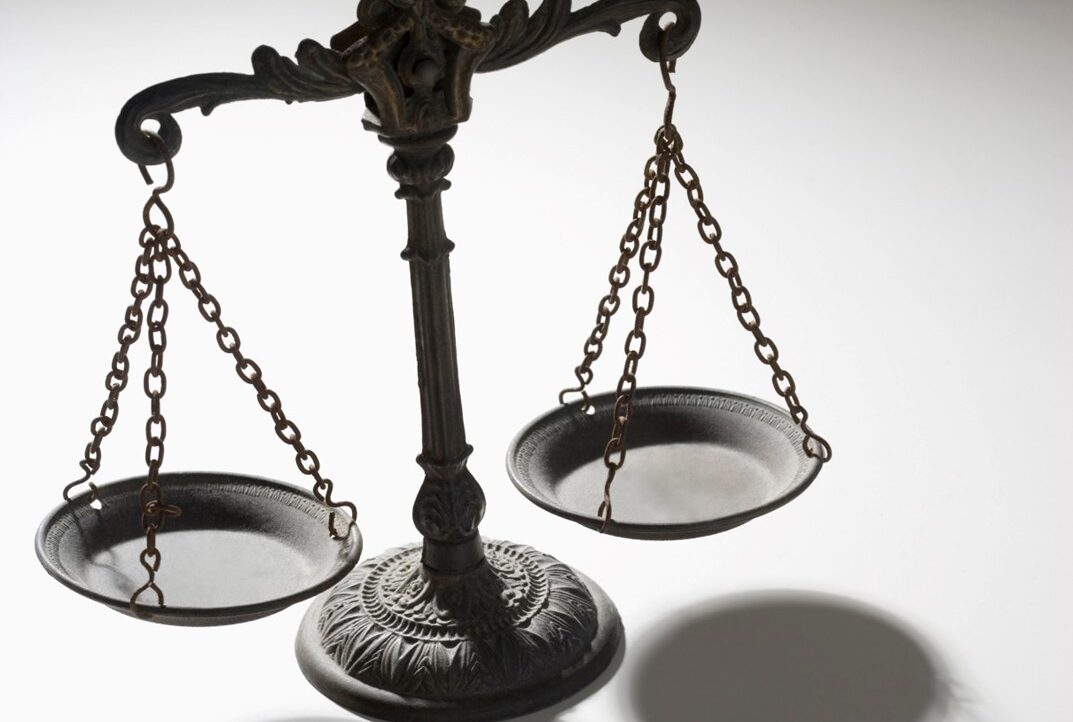Alerts & Updates 17th Nov 2022




At the heart of Customs law lies the quest to appropriately determine the pricing of goods sought to be imported or exported out of a jurisdiction. It is so because pricing has a direct bearing on the local customs duty paid on imports/exports. More important however, is the process of importation between “related entities” which invites deeper scrutiny and review by jurisdictional Customs Authorities. This is to satisfy that the relationship between the parties, has not influenced the pricing of the imported goods thereby impacting the revenue of the Government in question.
Immediately after World War II, with the realignment of the global order and uptick in cross border trade, the issue of appropriate valuation and monitoring of import pricing was first taken up for discussion in GATT (1947). Since then, globally, customs administrators have worked towards arriving at a robust and effective mechanism of valuation which could be administered to ensure appropriateness of import pricing in related party transactions. Qua the determination of fair import pricing, by the Uruguay Round (1994), the burden has shifted from the Customs Authorities to the importer. It is the responsibility of the importer to prove to the Customs Authorities that the imported value is correct and ought not be doubted.
India which participated in the Uruguay Round Table is also a signatory to the Agreement on Customs Valuation. This article attempts to discuss the evolution of the administrative mechanism in India for valuation of related party imports. In this process, the article also delves upon the mechanism followed in countries such as the United States, European Union and Australia.
In India, the concept of ‘value’ has been part of the Customs Law since 1878[1]. This concept has evolved over years from real value to normal value to transaction value. With the advent of liberalization in India and increased cross border trading, a need was felt to establish a dedicated wing to oversee issues relating to valuation. Resultantly, the Directorate of Valuation (‘DOV’) was established in 1997 to work along with the Central Board of Excise and Customs. Under the DOV, a Special Valuation Branch (‘SVB’) was established to investigate related party imports. The detailed instructions qua procedure for investigation of related party import cases by the SVB was initially introduced in 1998[2].
In terms of the procedure, the importer was required to file statutory Forms (Annexure X & Y) before its jurisdictional Customs Authorities, who if it deems fit could proceed with determining the appropriate value or forward the file to the to a SVB division for determination of value. Till the time of submission of information/ documents to the SVB, the importer was required to deposit Extra Duty Deposit (‘EDD’). The value of EDD was 1% of declared assessable value for the first 4 months, and in case of further delay was increased to 5% till such time the importer complies. Practically, various importers faced delays in dispensing of EDD, even after the required information was provided.
Further, upon furnishing of the information, the SVB Authorities conducted detailed review of the related party imports and passed an “appealable order” determining the value of the goods – which was valid for three years. Post expiry of the SVB Order, the entire process of engaging with the SVB Authorities, justifying the declared value and renewal of SVB Order had to be repeated, even if there were no change in facts. Simultaneously, upon issuance of a SVB Order, a separate order was passed by the Customs Authorities finalizing the pending assessments on the basis of the findings in the SVB Order.
Given the cumbersome procedure, the trade and industry filed various representations highlighting their concerns to the Government viz. delays in finalization of SVB investigations, continued uncertainty due to provisional assessments, increase in transaction costs due to extra duty deposits and burdensome procedure of renewal of SVB orders.
In view the representations, the WCO’s Guide to Customs Valuation and Transfer Pricing (June 2015) and the fact that the then procedures were based upon the Customs Valuation (Determination of Price of imported goods), Rules, 1988, which has since been superseded by the Customs Valuation (Determination of Value of Imported Goods) Rules, 2007, the Government took cognizance of the issues.
Finally in 2016, upon the recommendations of the Tax Administration Reform Commission (‘TARC’), the Government decided to revamp and overhaul the entire the entire SVB administration. This was with the intention to (a) resolve concerns of importers relating to delays in finalization of SVB investigations, continued uncertainty due to provisional assessments, increase in transaction costs and burdensome procedure of renewal of SVB orders; (b) align the procedure with the WCO’s Guide to Customs Valuation and Transfer Pricing (June 2015) & the Customs Valuation (Determination of Value of Imported Goods) Rules, 2007; and (c) to streamline the procedures relating to investigations by SVB & obviate multiple streams of appeals.
At this stage, it may also be instructive to refer to the practices in other international jurisdictions.
In the European Union[3], if the Customs Authorities are not satisfied or have reasonable doubt that the declared value of the imported goods do not represent the total amount paid or payable and the transaction value cannot be established solely on the basis of the price paid, a valuation order i.e., a formal determination of the value is obtained from the Customs Authorities. This valuation order is issued on the basis of declarations made by the importer, details coming from the import station; information arising as a result of a post clearance check or audit; and examination of relevant Automatic Identification Systems Data Elements; and remains in force until reviewed or till changes in circumstances of importation or trading relationships with suppliers.
In United States, the law and procedure of valuation is provided under the Customs Moderation Act. As per the said Act, the importer is required to take reasonable care while declaring the value of imported goods and provide any other information necessary to enable Customs and Border Protection to properly assess the goods. Once declared, the Customs Authorities fix the final appraisement of goods[4] in accordance with valuation methodology provided under law[5].
In Australia[6], the responsibility of making appropriate declarations lies on the importer of goods. The Customs and Border Protection, in certain cases, upon suo moto request by the importer, provide Valuation Advice as a service to the importer. The Valuation Advice although not legally binding on Customs and Border Protection, is honored unless it is provided on the basis of false or misleading information or incomplete information. This advice is obtained for ensuring ease in clearance of goods. It is binding for 5 years, post which fresh application for redetermination of value may be filed by the importer
Taking note of the concerns faced by the importers and administrative laches, TARC recommended that the Government ought to frame detailed documentation requirements for custom valuation; and to align the process in India with global best practices i.e., with self-assessment in place, import transactions should only be subjected to post-clearance audit which would deal with valuation risks to a large extent.[7]
It is provided that the importer ought to file a one-time declaration[8] before its jurisdictional Customs Authorities, who if it deems fit can proceed with determining the appropriate value. Usually, situations of one time / short period imports are decided by the Customs Authorities themselves. However, if the importer has multiple segments of imports through different ports, in consultation with the jurisdictional Customs Authority, the SVB proceedings may be assigned to a single SVB division.
When a matter comes to the concerned SVB division, the division opens a file in the name of the importer. As a start, the SVB Authorities seek various information namely, import data, basis of pricing, terms and conditions of sale, impact of relationship on the price, etc. from the importer. This is done through the statutory forms (Annexure A & B) notified by the circular. Upon receipt of necessary information, the SVB Authorities undertake a review and study of the same. Through this information, the primary focus of the importer is to establish and satisfy the SVB Authorities of the genuineness of the import price. The SVB Authorities can seek any further information and, in the process, also call upon necessary records as they may deem fit. Thereafter, it is mandated upon the SVB Authorities to issue an “investigation report”. The investigation report will be issued to the jurisdictional customs officers of the importer for finalizing the provisional assessments[9] at different ports. Drawing from its experience in the past, the investigation report has been made non-appealable. This is to ensure that two parallel proceedings, one against the SVB Order determining the assessable value and the other against finalization of assessments done by the Customs Authorities do not run simultaneously.
In cases where the investigation report concludes that the declared value has been influenced by the circumstances surrounding the sale, the jurisdictional customs officer is required to issue a show cause notice to the importer and duly adjudicate the matter. Once the value is determined / settled, all provisional and future imports are accordingly finalized on the basis of the determined value, till any change in circumstances of sale or terms and conditions of the agreement between the buyer and related seller, or any other payments is notified by the importer.
In furtherance of the TARC Recommendations, the Government has also simultaneously revised and implemented a more comprehensive regulation[10] for conducting post import audits to align Indian Customs Laws with international best practices and WTO’s Trade Facilitation Agreement – with a view to expedite clearance of goods at the time of import and conduct post clearance audit in a risk-based manner. The purpose and objective of these audits is an overall regulatory compliance check to inter alia identify any revenue loss on account of non-disclosures, misrepresentations, etc.
Despite the above revised simplified procedure for investigation of related party imports and the other steps undertaken by the Government, including post import audits, importers still seem to be facing various challenges.
First, despite the introduction of the revamped procedure, on the ground, it still takes substantial time for obtaining an investigation report from the SVB. Till such time, the assessments are kept provisional and open for scrutiny, in all respects. Further, if the investigation report does not accept the transaction value, it opens a stream of litigation which will take years to reach finality. In the interim, the differential duty (i.e., the difference between the final value determined and the declared value) and interest for imports keeps piling up.
Second, since substantial time is consumed in final determination of transaction value (in the process of litigation), in the interim for future imports – changes which occur in the circumstance of sale, pricing pattern, relation shared between the parties, the nature of business activities undertaken by the importer, etc. – which would have not been considered during the investigation due to latter change in circumstance, however, ought to be considered while determining the transaction value for future related party imports. In terms of Circular No. 5/2016[11], change in circumstances of sale or terms and conditions of the agreement, are to be declared to the SVB Authorities. Upon declaration of the change (during the pendency of a matter), there is a likelihood of a fresh investigation being initiated for the future period, followed by issuance of another investigation report. However, since the proceedings under the previous investigation report are not concluded and a new investigation report based on the changed circumstances is issued, resultantly two files are open for a single entity – which leads to multiplicity of proceedings, undermining the very purpose of introducing the current mechanism.
Third, despite the simplification of process in law, on ground, the grind to obtain the valuation order remains a challenge. The process currently involves issuance of one consolidated investigation report which will be shared with the jurisdictional Customs ports of the importer. The implementation for this itself is froth with challenges. In matters where the SVB accepts the valuation of the importer and issues a favorable investigation report, it obviates the need to make a separate representation before jurisdictional Customs Authorities. However, such cases appear to be far and few. In cases where loading is prescribed, the jurisdictional Customs Authorities proceed to issue Show cause Notices whereby the importer has to reagitate the very issues which were diligently put forth before the SVB Authorities. This approach needs a relook.
In the last decade the Government has undertaken significant steps (self-assessments, introduction of EDI system, etc.) to streamline the entire process of importation, including the introduction of the revamped procedure (2016) for valuation of related party imports. However, for MNEs, valuation remains the primary concern.
In the spirit of doing ease of business and Government of India’s quest to simplify the current framework, the Government should work towards addressing the above stated three challenges. This will be in tune of the recent changes to make the import procedure importer friendly and robust.
[1] Section 32 of the Sea Customs Act. 1878
[2] Circular No. 01/1998 dated 01.01.1998
[3] Union Customs Code (Regulation (EU) No 952/2013) Articles 69 to 76; Commission Implementing Regulation (EU) 2015/2447 Articles 127 to 146, Article 347 and Annexes 23-01 and 23-02; Commission Delegated Regulation (EU) 2015/2446, Article 71; Commission Delegated Regulation (EU) 2016/341, Article 6; Customs Manual on Valuation (2021 Edition); Compendium of Customs Valuation Texts (2021 Edition)
[4] 19 U.S.Code §1500(a)
[5] 19 U.S. Code §1401a
[6] Instructions and Guidelines: Valuation Advices (2012) by National Director Cargo and Trade
[7] First Report of the TARC
[8] Earlier SVB orders were reviewed periodically every 3 years
[9] Assessments are kept provisional during the period when the value is being determined.
[10] Section 99A of the Customs Act, 1962 read with Customs Audit Regulations, 2018
[11] Circular No. 5/2016 states that in case of change in circumstances of sale or terms and conditions of the agreement, the importers should declare the same at the place of import where the proper officer shall examine the transactions and the jurisdictional Commissioner shall refer the matter to the jurisdictional SVB, where required.